 December 7, 2023 John E. Ross, KD8IDJ, Editor
| ||||||
ARDC and ARRL Announce $2.1 Million for the Next Generation of Amateur Radio Amateur Radio Digital Communications (ARDC) and The ARRL Foundation announced a three-year commitment with over $2.1 million in combined funding to support scholarships for radio amateurs, radio technology for classroom teachers, and amateur radio club grants. "ARRL and ARDC share a common vision for the future of Amateur Radio," says The ARRL Foundation President David Norris, K5UZ. The ARDC Scholarship at The ARRL Foundation has supported nearly 100 amateur radio operators in pursuit of their educational goals since its inception in 2020. The renewed commitment will result in over 200 total scholarships, awarded over the next three years, for radio amateurs pursuing higher education, with scholarships ranging from $5,000 to $25,000. This competitive scholarship program is run through The ARRL Foundation Scholarship Program, and recipients who demonstrate academic excellence and financial need can use this funding for tuition, room & board, books, and other fees essential to advance their education. More information on eligibility and application deadlines may be found online at The ARRL Foundation website at www.arrl.org/scholarship-program. The ARRL Club Grants program was introduced in 2022 with initial funding from ARDC. Thanks to this next round of collaboration, the ARRL Club Grants Program will continue in 2024. Beginning with significant funding from ARDC in 2022, the ARRL Club Grants program is administered by The ARRL Foundation, together with the ARRL Field Organization. These club grants are critical to the future of amateur radio because of the importance of mentoring and helping licensees become active in Amateur Radio. ARRL encourages clubs to revitalize this critical aspect of their role by applying for funding to support programs in one of the available categories, including ham skills development, STEAM learning and education, or club station improvement, among others. This transformational program will launch in the Spring of 2024. More details will be provided through upcoming informational sessions and on The ARRL Foundation website at www.arrl.org/club-grant-program. Additional funding from ARDC will extend the effectiveness of ARRL outreach programs to teachers and schools, including the ARRL Teachers Institute for Wireless Technology. Monies will be used to purchase equipment to allow students to get hands-on STEM experiences through radio communications and radio technology. Read more about the exciting announcement on ARRL News. Bandwidth Limits Replace Symbol Rates on the HF Bands, Other Bands Open for Comment The Federal Communications Commission (FCC) published new rules adopted last month that replace the symbol rate restrictions on the HF bands with a bandwidth limit of 2.8 kHz. The bands and band segments affected by the rules change are those authorized for data transmission between 160 and 10 meters, exclusive of 60 meters (where no change was made). In adopting a bandwidth limit in place of the baud rate limit the FCC agreed with ARRL that some limitation is necessary because "without a baud rate or bandwidth limit, data stations using a large amount of spectrum for a single emission could do so to the detriment of simultaneous use by other stations using narrowband emission modes." ARRL has advocated for this change for a long time. The move opens amateur data communications to faster and more modern modes and restores the incentive for amateurs to experiment with and develop faster and more efficient data methods. Previously, ARRL obtained waivers to the symbol rate rules on a case-by-case basis to facilitate communications during situations like hurricane responses. These delays will now be removed, permitting drills to be conducted with the faster modes and more timely responses when needed. The FCC also requested comment on removing similar symbol rate restrictions in the rules governing 135.7 - 137.8 kHz (2200-meter band), 472 - 479 kHz (630-meter band), and the very high-frequency (VHF) and ultra-high frequency (UHF) bands. The VHF bands with baud rates are the 6-meter band, 2-meter band, and the 1.25-meter band. The single UHF band with a baud rate is the 70-centimeter band (420 - 450 MHz). The Further Notice of Proposed Rule Making (FNPRM) proposes to maintain the existing bandwidth limits in the Commission's rules for these VHF and UHF bands but seeks comment on whether they should be kept, and if so, whether the bandwidths should be changed. The Commission also sought comment on whether bandwidth limits should be adopted for application to the 2200 and 630-meter bands, and if so, what an appropriate bandwidth limit would be. Public comments on these additional issues are sought in the FNPRM. The comment period is open until January 8, 2024. Replies to comments are due no later than January 22, 2024. If changes are later adopted, the rules will go into effect in the same manner as they did for the other bands -- after notice and publication in the Federal Register. IARU and ARRL Attending WRC-23 in Dubai, UAE The International Telecommunication Union (ITU) World Radiocommunication Conference 2023 (WRC-23) began November 20 in Dubai, United Arab Emirates, and will continue through December 15, 2023.
WRC's are held every 3 to 4 years and include the Amateur and Amateur Satellite Service allocations. The International Amateur Radio Union (IARU) is a Sector Member of the ITU and globally represents the interests of amateur radio. A contingent of representatives from IARU and ARRL in the US are attending the meetings. ARRL serves as the International Secretariat of the IARU. The agenda of items to be reviewed for WRC-23 was established at the completion of the last conference in 2019. Of primary importance to the Amateur and Amateur Satellite Services is Agenda Item 9.1 topic b, which addresses the amateur use of the 23 - centimeter band and the co-frequency use by several radio navigation satellite service (RNSS) systems in the 1240 - 1300 MHz band. IARU President Tim Ellam, VE6SH, (on the left), and IARU Vice President Ole Garpestad, LA2RR (on the right) met with ITU Secretary-General Doreen Bogdan-Martin, KD2JTX, (in the center) during WRC-23. The work at WRC-23 involves several committees, working groups, and sub - working groups that negotiate spectrum matters in an effort to reach consensus on the conference agenda items to subsequently be presented and formally adopted during the final plenary session. A report on items of interest to amateur radio from WRC-23 will be reported at its conclusion. ARRL Teachers Institute Grad Prepares Students for Ham Radio Contact with Astronaut ARRL celebrates the success of an ARRL Teachers Institute on Wireless Technology graduate. The skills learned in the Teachers Institute (TI) have led to a school having an amazing opportunity using amateur radio.
On Monday, December 11, 2023, students at Harbor Creek Senior High School in Harborcreek, Pennsylvania, will host an Amateur Radio on the International Space Station (ARISS) contact. Assistant Principal Drew Mortensen, AC3DS, completed the ARRL TI-1: Introduction to Wireless Technology program. Mortensen; Allen Lombardozzi, KC3TGY, and Elaine LaFuria, KC3SFY, have led the development of a robust amateur radio program at the school. After attending the ARRL Teachers Institute, their students prepared and launched their own high-altitude balloon, capturing the interest and passion of other students, teachers, and the community. Fifteen Harbor Creek students participating in the ARISS contact are licensed amateur radio operators. Since applying for the contact in November 2022, Harbor Creek has seen 16 students earn their amateur radio licenses, with three going on to earn their General-class licenses and three more going on to earn their Amateur Extra-class licenses. Mortensen expressed gratitude for the ARRL Youth Licensing Grant Program, which reimburses the $35 amateur radio licensing fee to those younger than 18, for helping to lower the barrier of entry for students. Students at the Harbor Creek School District Advanced Technologies Group, KC3SGV, meet regularly and fill the meeting space to maximum capacity. The students of the group will livestream the event on their YouTube channel at youtube.com/@advancedtechnologiesgroup. This livestream will be run and managed by students. ARRL Education and Learning Manager Steve Goodgame, K5ATA, is excited about the school's success, stating, "The program at Harbor Creek Senior High School is a shining example of the impact the ARRL Teachers Institute on Wireless Technology can have on students." If you are interested in supporting STEM education through the Teachers Institute on Wireless Technology, visit www.arrl.org/GiveToSTEM. December ARISS Contact with South Carolina School On Tuesday, December 5, students at Orangeburg Christian Academy (OCA) in Orangeburg, South Carolina, had the opportunity to speak with Astronaut Jasmin Moghbeli, KI5WSL, onboard the International Space Station (ISS).
OCA is a small school of about 250 students in grades K-12. The faculty includes space science, space travel, science on the ISS, electronics, amateur radio, and more astronomy in various STEM studies. The event lasted just more than 10 minutes, and Moghbeli answered 20 questions ranging from safety in space to what astronauts drink in space and what it is like to shower in space. The contact was arranged by Amateur Radio on the International Space Station (ARISS). Each year, ARISS conducts 60 - 80 of these special amateur radio contacts between students around the globe and crew members with ham radio licenses aboard the ISS. Phillip Shreves, N7GZT, assisted with the ARISS contact by operating the link to the radio ground station to establish and maintain the ISS connection. 40 Years of Amateur Radio in Space Melissa Gaskill, a science author from Austin, Texas, has written a comprehensive review about the 40-year history of amateur radio in space. In her article, "Ham Radio in Space: Engaging with Students Worldwide for 40 Years," Gaskill explores the Shuttle Amateur Radio Experiment (SAREX), which is now known as Amateur Radio on the International Space Station (ARISS). Gaskill said that while she wrote the article, she is not an expert on the Ransom said that amateur radio in space was a possibility even before 1983, when Astronaut Owen Garriott, W5LFL (SK), made history during the STS-9 Space Shuttle Columbia mission with the first amateur radio contact from space. NASA had been looking for ways to bring amateur radio to Skylab (a space station designed as an orbiting workshop for scientific research) and even the moon. "Having amateur radio in space has added a heightened level of interest, not only for hams, but for the overall program as well," said Ransom. "Just being able to talk to a crew member on board a spacecraft is an amazing accomplishment." Garriott's son, Richard Garriott, who operated amateur radio during a short-term mission on the ISS in 2008, will present a special webinar on December 7, 2023, at 1800 UTC to discuss his father's first historic mission. The presentation will be available to watch on ARISS - YouTube. The event is hosted by ARISS International Chair Frank Bauer, KA3HDO. ARISS is a cooperative venture of international amateur radio societies and the space agencies that support the ISS. In the US, participating organizations include NASA's Space Communications and Navigation (SCaN) program, the ISS National Laboratory -- Space Station Explorers, ARRL, and AMSAT. Holiday Gift Guide Brought to You by ARRL Looking for the perfect holiday gift for the radio amateur in your life? ARRL has made shopping easy for you with our 2023 Holiday Gift Guide. We've brought together 10 great companies offering their seasons best. You can view it on our website. VOTA Red Badge Day Is December 17 2023 has been a fun operating year for ARRL's Year of the Volunteers with the Volunteers On the Air (VOTA) event. ARRL Radiosport Manager Bart Jahnke, W9JJ, explained, "The badges they wear at hamfests, conventions, and other formal occasions are red, hence the term Red Badges on the Air. ARRL red badges are worth a lot of points -- as much as 300 points per contact for working ARRL President Rick Roderick, K5UR -- so participants can quickly increase their VOTA points tally. Jahnke stressed that the event is "an activity day, not a contest"; there's no required amount of operating time. Participants can call "CQ VOTA" on phone or "CQV" on CW or digital modes. While the event is focused on encouraging those with ARRL red badges to hand out VOTA points, all activity is welcome, regardless of point value (every ARRL member is worth at least one point in the operating event). Participants get credit for each band or mode contact, regardless of point value. ARRL VOTA participants can use the leaderboard to determine how many points they've accumulated. Read more about the event on ARRL News.
Amateur Radio in the News ARRL Public Information Officers, Coordinators, and many other member-volunteers help keep amateur radio and ARRL in the news. "Ham Radio in Space: Engaging with Students Worldwide for 40 Years" / NASA November 29, 2023 "CERTs from across the region will hold emergency rescue training in Eugene this Saturday" / KLCC (Oregon) November 30, 2023 -- Community Emergency Response Teams (CERTs). "All hands on deck for Emergency Alert and Ham Radio teams" / Vashon-Maury Island Beachcomber (Washington) December 6, 2023 -- Voice of Vashon Emergency Alert Team. ARRL Podcasts On the Air The Value of Contest Clubs "Contesting encompasses so much of the hobby," says seasoned contester Craig Thompson, K9CT, in the current episode of the On the Air podcast, "from station building, learning how to operate, understanding propagation, knowing the rules, learning from your peers," that there's something in it for every ham radio operator. As current member and former president of the Society of Midwest Contesters, Craig knows the ins and outs of running a contest club and ensuring that the value proposition makes sense to the average member. In this episode, Craig talks about why you might want to get involved with a contest club, what it entails, and how these specialized clubs stir up on-air activity that benefits every ham. This discussion extends the November/December 2023 On the Air, "Joining a Contest Club," by Leanna Figlewski, KC1RMP. ARRL Audio News The On the Air podcast is available on iTunes. The On the Air podcast and ARRL Audio News are also on blubrry -- On the Air | ARRL Audio News. Announcements 2023 SKYWARN⢠Recognition Day participants can now obtain an electronic QSL card by visiting the NOAA SKYWARN website. Step-by-step instructions are available to those who've submitted their log(s) to help them construct and print a 2023 QSL participation certificate. The deadline for submitting logs is January 31, 2024. Additional information is available on the SKYWARN Facebook page. The New Amateur Extra-Class Question Pool has been released and is effective July 1, 2024. The National Conference of Volunteer Examiner Coordinators (NCVEC) Question Pool Committee (QPC) has released the 2024 - 2028 Extra-Class FCC Element 4 Question Pool and Syllabus to the public. The new Extra-Class Question Pool is effective from July 1, 2024, through June 30, 2028.The 2024 - 2028 pool is available as a Microsoft Word document and as a PDF. The 10 graphics required for the new Extra-Class Question Pool are available within the documents or separately in PDF and JPG file formats. Extra-class examination candidates preparing for their exams using the 12th edition of The ARRL Extra Class License Manual or the 5th edition of ARRL's Extra Q & A are encouraged to test on or before June 30, 2024. New editions of ARRL licensing publications will be available in May for exams taken on or after July 1, 2024. Read more on ARRL News. In Brief... Amateur radio operators have multiple opportunities to commemorate National Pearl Harbor Remembrance Day 2023. The Amateur Radio Club of the National Electronics Museum (ARCNEM) will operate W2W to commemorate the anniversary of Pearl Harbor Day and the role of electronics in World War II. If the museum station is not available, operators may operate from their home stations. Primary operations will be on December 1 - 7, with a possibility of additional operations during December 8 - 10, as operator availability permits. Operation on 80 meters (3.541 and 3.841 MHz) and digital modes will be possible during the event. A QSL certificate is available via SASE. Visit the ARCNEM website for details and additional information. The Baton Rouge Amateur Radio Club (BRARC) station, W5KID, onboard the USS KIDD Museum ship, will be on the air in remembrance of Pearl Harbor Day on December 7, 2023. Operations will be on 7.040, 7.250, 14.040, and 14.250 MHz using CW, SSB, and FT8 modes. This will be the last operating date until the ship returns next year from extensive maintenance. Sign up here to reserve one or multiple 30-minute time slots. The USS Midway Museum Ship COMEDTRA, NI6IW, staffed by amateur radio volunteers, will be on the air on December 9 from 1700 - 2400 Z. Contacts will be available on 14.320, 7.250, and 14.070 MHz; PSK31; D-STAR, and the PAPA system repeaters. Additional information is available on the museum's website. The K7RA Solar Update Tad Cook, K7RA, of Seattle, Washington, reports for this week's ARRL Propagation Bulletin, ARLP049:
Six new sunspot groups emerged over this reporting week, November 30 to December 6, 2023. Using the previous week's bulletin as a template, last week's averages were not updated, although all the correct data was there. This week's bulletin includes the updated averages from last week. Instead of 83.3 being the average daily sunspot number, it was actually 165.9, which dropped this week to 121.1. Instead of an average daily solar flux of 146, it was actually 181.5, which declined this week to 146.5. Instead of the average daily planetary A index of 10.1, it was actually 11.6, which rose this week to 17.1. Instead of the average middle latitude A index of 7.3, it was 9, which rose this week to 11.4. Predicted solar flux is 130, 135, 135, and 140 on December 7 - 10; 130 on December 11 - 13; 140 on December 14 - 16; 150 on December 17; 160 on December 18 - 26; 155, 150, 145, and 140 on December 27 - 30; 136, 134, and 130 on December 31 through January 2, 2024, and 132 on January 3 - 5. Predicted planetary A index is 8 on December 7; 5 on December 8 - 10; 8 on December 11 - 12; 5 on December 13 - 17; 15, 25, 8, 5, 20, and 10 on December 18 - 23; 5 on December 24 - 30; 25, 10, and 8 on December 31 through January 2, 2024, and 5 on January 3 - 6. Read about a big hole in the sun at https://bit.ly/41adYDC and the sun's new active region at https://bit.ly/3RxtCWG. Don't forget, the ARRL 10-Meter Contest is this weekend. Visit https://www.arrl.org/10-meter to learn more. Sunspot numbers for November 30 through December 6, 2023, were 138, 140, 92, 107, 113, 133, and 125, with a mean of 121.1. The 10.7-centimeter flux was 166.5, 162, 148.2, 139.2, 137.8, 141.6, and 129.9, with a mean of 146.5. Estimated planetary A indices were 5, 56, 14, 11, 9, 15, and 10, with a mean of 17.1. Middle latitude A index was 4, 30, 11, 10, 9, 9, and 7, with a mean of 7.3. A comprehensive K7RA Solar Update is posted Fridays on the ARRL website. For more information concerning radio propagation, visit the ARRL Technical Information Service, read "What the Numbers Mean...," and check out the Propagation Page of Carl Luetzelschwab, K9LA. A propagation bulletin archive is available. For customizable propagation charts, visit the VOACAP Online for Ham Radio website. Share your reports and observations. A weekly, full report is posted on ARRL News. Just Ahead in Radiosport Yearlong -- ARRL Volunteers On the Air (VOTA). See the State Activations Schedule for weekly W1AW Portable Operations, including:
Upcoming Contests:
Visit the ARRL Contest Calendar for more events and information. Editors Note: Contests can be a great place to rack up final points for the Volunteers On the Air (VOTA) operating event. VOTA ends December 31, so get those points while you can! All you need to do is upload your logs to the ARRL Logbook of The World (LoTW) Upcoming Section, State, and Division Conventions
Search the ARRL Hamfest and Convention Database to find events in your area. Have News for ARRL? Submissions for the ARRL Letter and ARRL News can be sent to news@arrl.org. -- John E. Ross, KD8IDJ, ARRL News Editor
ARRL -- Your One-Stop Resource for
Free of charge to ARRL members...
| ||||||
 This commitment reinforces a strong shared vision between ARRL The National Association for Amateur Radio® and ARDC to invest in the future of amateur radio through programs supporting the next generation of radio amateurs.
This commitment reinforces a strong shared vision between ARRL The National Association for Amateur Radio® and ARDC to invest in the future of amateur radio through programs supporting the next generation of radio amateurs.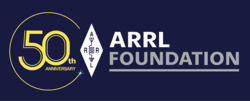 "The Foundation exists to support the next generation of radio amateurs, and we are so proud to collaborate with ARDC to make these programs possible."
"The Foundation exists to support the next generation of radio amateurs, and we are so proud to collaborate with ARDC to make these programs possible."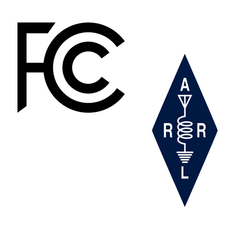 The new rules go into effect January 8, 2024.
The new rules go into effect January 8, 2024. During WRC-23, the ITU's 193 sovereign Member States, each with one equal vote, will address items on a formal agenda in an effort to reach consensus on revisions to the ITU Radio Regulations, the international treaty governing the global use of radio-frequency spectrum and satellite orbits.
During WRC-23, the ITU's 193 sovereign Member States, each with one equal vote, will address items on a formal agenda in an effort to reach consensus on revisions to the ITU Radio Regulations, the international treaty governing the global use of radio-frequency spectrum and satellite orbits. 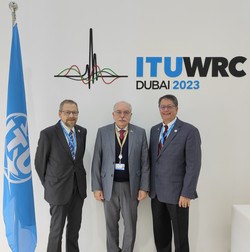

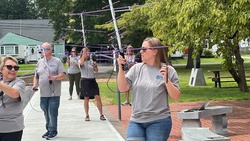
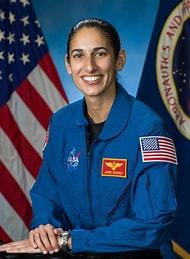
 subject but there are many who are including Kenneth Ransom, N5VHO, International Space Station (ISS) Ham Project Coordinator since 2004.
subject but there are many who are including Kenneth Ransom, N5VHO, International Space Station (ISS) Ham Project Coordinator since 2004.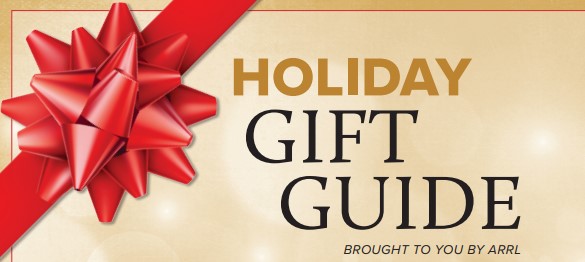
-2023.jpg) To help members boost their VOTA point totals, ARRL is hosting a Red Badges on the Air activity on December 17, 2023, from 1500 - 2100 UTC. The objective of the event is to provide an opportunity for VOTA participants to work more ARRL officers and elected officials, such as Directors or Section Managers and Headquarters staff members and volunteers, who offer higher point values in the yearlong event.
To help members boost their VOTA point totals, ARRL is hosting a Red Badges on the Air activity on December 17, 2023, from 1500 - 2100 UTC. The objective of the event is to provide an opportunity for VOTA participants to work more ARRL officers and elected officials, such as Directors or Section Managers and Headquarters staff members and volunteers, who offer higher point values in the yearlong event.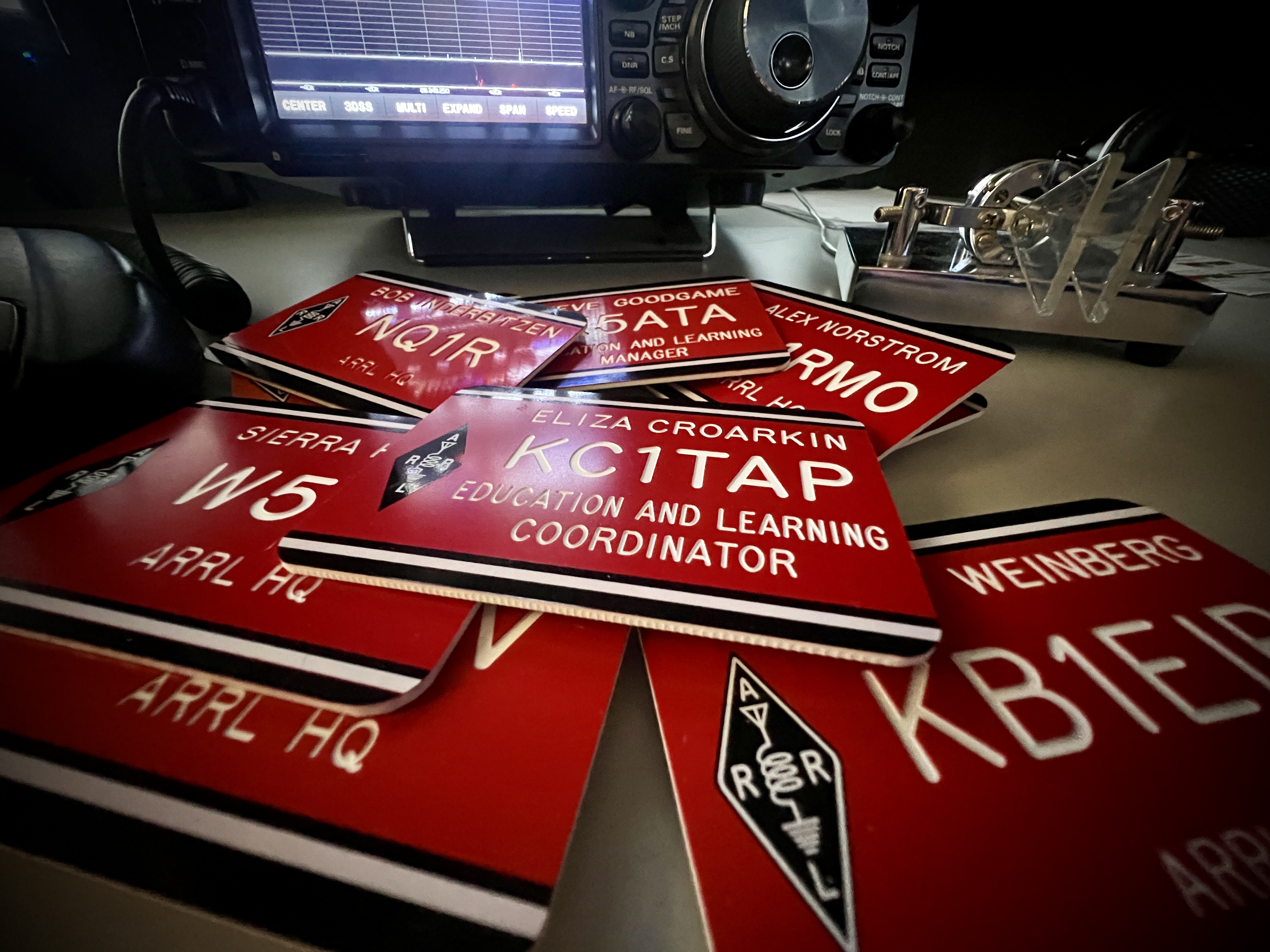
.jpg)
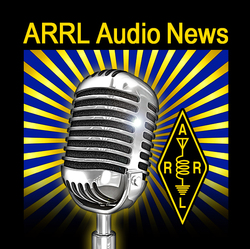 Listen to
Listen to 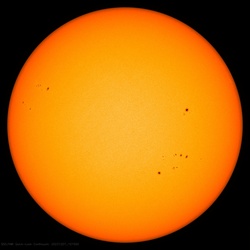
-2023-small.jpg)
-Blue.jpg)








